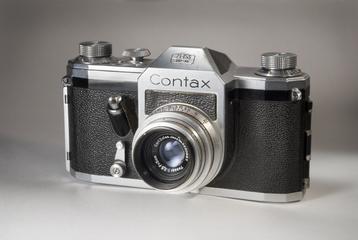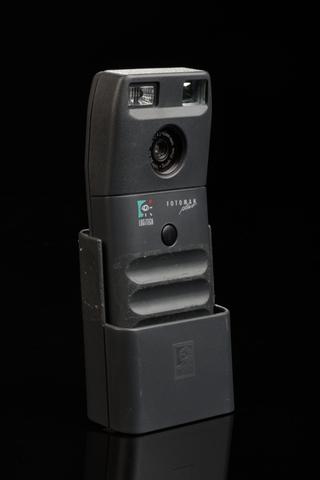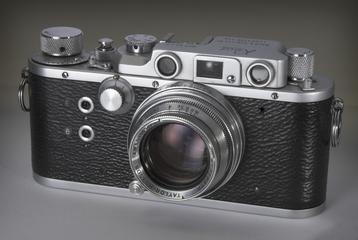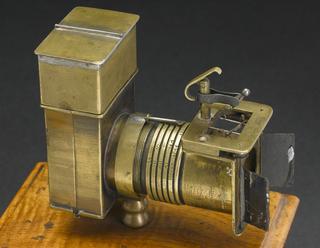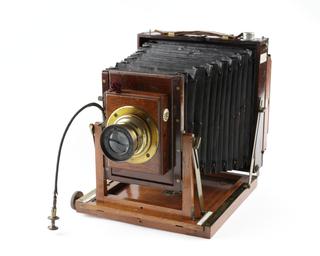
Dagron microphotographic camera








All-brass camera for multiple microphotographs; 25 lenses in 5x5 arrangement (5 missing). Repeating back. On pillar and heavy iron base. Critical focusser. From lot bought by Kodak-Pathe; owned by Lize, 30 Rue Blondel, Paris
Dagron microphotographic camera made by René P P Dagron (1819-1900) in France, c. 1860.
John Benjamin Dancer (1812-1887) invented microphotographic process, but they required an expensive microscope to be viewed. Dagron invented a new, less expensive way of viewing microphotographs, by mounting them at the end of a small cylindrical lens. Dagron also designed this camera, which could take multiple microphotographs using 25 lenses in a 5 by 5 arrangement.
Details
- Category:
- Photographic Technology
- Collection:
- Kodak Collection
- Object Number:
- 1990-5036/7001
- Materials:
- metal (unknown) and glass
- Measurements:
-
overall: 145 mm x 175 mm x 133 mm,
- type:
- photomicrographic camera
- credit:
- The Kodak Collection at the National Media Museum, Bradford
